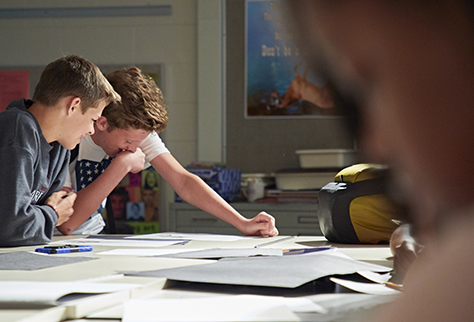Part One of Two
By Ken Kay
The idea of 21st century education isn’t new, but the movement gained substantial momentum in 2018. I believe that this momentum is due to the creation and adoption of a Portrait of a Graduate by a growing number of school districts around
the country. Through these Portraits, school districts are identifying the competencies students need (along with content mastery) to prepare themselves for 21st century life, civic responsibility, and work.
However, just creating and adopting a Portrait of a Graduate isn’t enough. Your portrait won’t magically change your district. It takes much determination to see it through to deep implementation that will profoundly impact every student in
every classroom. And it also takes fully embracing the need for students to lead their own learning.

In the 20th century, it would have been common practice for a district superintendent and school board to adapt such a frame and issue an edict that it be adopted. But today, we realize that students and teachers need to be a central part of the
Portrait of a Graduate’s design. This is referred to as student voice and choice—ensuring that students have input into the learning experiences that create their own portraits.
From my perspective, we need more than student input. We need a more pervasive role for students throughout the entire process.
Students must be leading their education. I suggest focusing on three questions:
Are students self-directed?
Are we challenging students to take on significant responsibility in their schools?
Are students solving school, community, national, and global problems?
Let’s explore these questions.
Are Students Self-Directed?
This is a critical question for 21st century students and their educators. In today’s world, 21st century challenges require more than an intention to work hard. They require a student/citizen/worker to ascertain the best next step, and more
importantly, to be self-motivated to actually take it.
As I travel around the country and ask teachers if their students are self-directed, they respond, “My students ask me, ‘How do I get an A?’ or ‘What should I do next?’” These questions indicate an absence of self-direction.
Do you see students exercise self-direction? What are examples? What teaching strategies lead to the self-direction? I’d love to hear from you with some concrete examples.
Are Students Leading?
When I work with schools and districts on school redesign, one question I often ask is, “What functions of the school could students run?” This question has proven to be provocative.
One important way to increase student responsibility is to give it to them. Students are now running makerspaces and credit unions. They are taking responsibility for developing key district policies. What examples do you have of students
directing major aspects of their school? I would love to hear them.
What Real-World Problems Could Students Solve?
There is probably no more important 21st century competency than creative problem solving. We need a generation of problem solvers. How will this happen if we aren’t challenging our students to solve problems?
It is inspiring to go around the country and hear the amazing challenges our students are taking at the school, community, statewide, national and even global level. Students are solving local traffic problems, creating local sustainability strategies
and working on problems like global famine. What examples of student problem solving can you share with me?
I Need Your Help
I need you to pitch in. I’d love to include examples from your district or school, or examples you’ve seen in other places. Please send me examples of:
Strategies for instilling self-direction
Students leading an aspect of school, or
School, neighborhood, national, and global creative problem solving by students.
Please send your stories to me at kkay@edleader21.org.
Together, we can help students be leaders in their own learning and in their schools and communities. When this happens, we will know that we’ve truly realized the power and promise of 21st century learning for every student.

By Ken Kay
CEO, EdLeader21,
A Network of Battelle for Kids
subscribe to newsletter